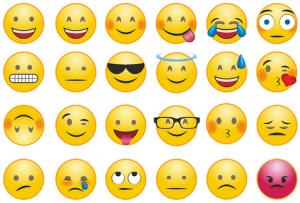 WCAG and W3C might be familiar acronyms, but what do they mean? And what, if anything, you should be doing about it? No matter what your role, everyone needs to have a basic understanding. That’s because we are living in a digital age. The article, WCAG for people who haven’t read them, is a good place to start.
WCAG and W3C might be familiar acronyms, but what do they mean? And what, if anything, you should be doing about it? No matter what your role, everyone needs to have a basic understanding. That’s because we are living in a digital age. The article, WCAG for people who haven’t read them, is a good place to start.
WCAG – Web Content Accessibility Guidelines 2.1, can a bit daunting at first. That’s because this is an international document and doesn’t translate well in all languages. The guidelines are also very long. Alan Dalton has taken away the legalese and provided a simpler and more user-friendly explanation of these guidelines. He covers text, operating the website, understanding content, ensuring the site works on all devices.
 Web accessibility is becoming increasingly important as we move ever closer to reliance on computers and other internet devices. Web accessibility is not just a matter for people who are blind or have low vision.
Web accessibility is becoming increasingly important as we move ever closer to reliance on computers and other internet devices. Web accessibility is not just a matter for people who are blind or have low vision.
All webpages, blog pages, or uploaded documents or pictures should be accessible. Dalton’s information is good for website managers and others who provide newsfeeds, documents and pictures for their website. Dalton’s article has links to more complex documents such as Understanding WCAG 2.0, and the Techniques for WCAG 2.0 – together they become 1,200 printed pages. The W3C – World Wide Web Consortium, released the next version, WCAG 2.1. in 2018. However, the key information remains current.
There are links to other useful resources, such as Why Bother with Accessibility?
Overview of Web Guidelines 2.1 Update
 Alan Dalton provides a non-geek look at the WCAG update in his article, Web Content Accessibility Guidelines 2.1 – for People Who Haven’t Read the Update. The update has 17 success criteria for web accessibility that were added last year by the working group.
Alan Dalton provides a non-geek look at the WCAG update in his article, Web Content Accessibility Guidelines 2.1 – for People Who Haven’t Read the Update. The update has 17 success criteria for web accessibility that were added last year by the working group.
The new criteria make it easier to produce accessible content for people using mobile devices and touchscreens. People with low vision, and people with cognitive and learning disabilities are also covered. Making sure your website can be used in portrait and landscape orientation, colour contrast, graphics and the value of autocomplete are some of the features discussed.
Live captioning and sign language are also included. There are lots of links to other documents for reference. There is also a book list. This article might be non-geek for Alan Dalton, but even with some techo language you can get the gist of what is being updated even if you are not a web designer or technician. As we advance in the digital age this sort of information will be important for everyone who needs to communicate using digital technologies.
WCAG 2.2
The final recommendation for WCAG 2.2 will be made available towards the end of 2022. According to speculations, it will most likely be out in December 2022. WCAG 2.2 is not entirely a new recommendation but an updated version of WCAG 2.1.
The W3C website has more technical details on WCAG2.1. You can access more information in the ICT and UD section of this website.
